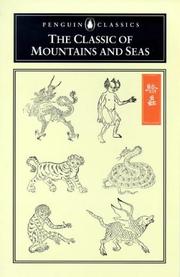Classic of Mountains and Seas

Shan Hai Jing (Classic of Mountains and Seas) was an important literature on geography in ancient China. The currently available version includes 18 volumes, among which 5 volumes are Shan Jing (Classic of Mountains), 8 volumes are Hai Jing (Classic of Seas), 4 volumes areDa Huang Jing (Classic of Big Land) and 1 volume is Hainei Jing (Classic of Mainland). It is said that Shan Hai Jing was written by Yu, one of the forefathers of ancient China, but the saying is quite doubtful. In this book, Shan Jing and Hai Jing form their own specific systems accordingly, while they were finished in different periods. Shan Jing contains the description of famous mountains and great rivers, propagation and minerals on the mainland. It estimated that this part of the book was finished in the early or mid period the Warring States Period (475-221BC). Hai Jing contains a great deal of alien legends, fairy tales home and abroad, and was written in the Qin Dynasty (221-206BC) or at the beginning of the Western Han Dynasty (206BC-8AD).
Shan Hai Jing, containing rich legends and fairy tales, is very valuable for historical study, especially helpful for research on primitive society in China, and the primitive surname, tribes, and knowledge and understanding of the universe, nature and social development.
According to the records in Shan Hai Jing, the Yellow Emperor is the heavenly emperor of the west. He was the great grandfather of Zhuan Xu (a legendary ancient emperor), the grandfather of Guan. He was also the ancestor of many tribes inside and outside China. Di Jun has no records in other books and is not listed among San Huang Wu Di (Three Emperor and Five Gods), and is the only heavenly emperor in Shan Hai Jing.
In this book, he was the inventor of farming, craft, vehicle, boat, musical instrument, singing and dancing. Together with Xi (the legendary goddess), he gave birth to 10 suns and 12 moons, which relate to the astronomy and the calendar. There are still many legends about the water-control of the Great Yu, battle between the Great Yu and Gong Gong, and so on.
http://www.chinjuh.mydns.jp/sengai/
http://en.wikipedia.org/wiki/Shan_Hai_Jing
No comments:
Post a Comment